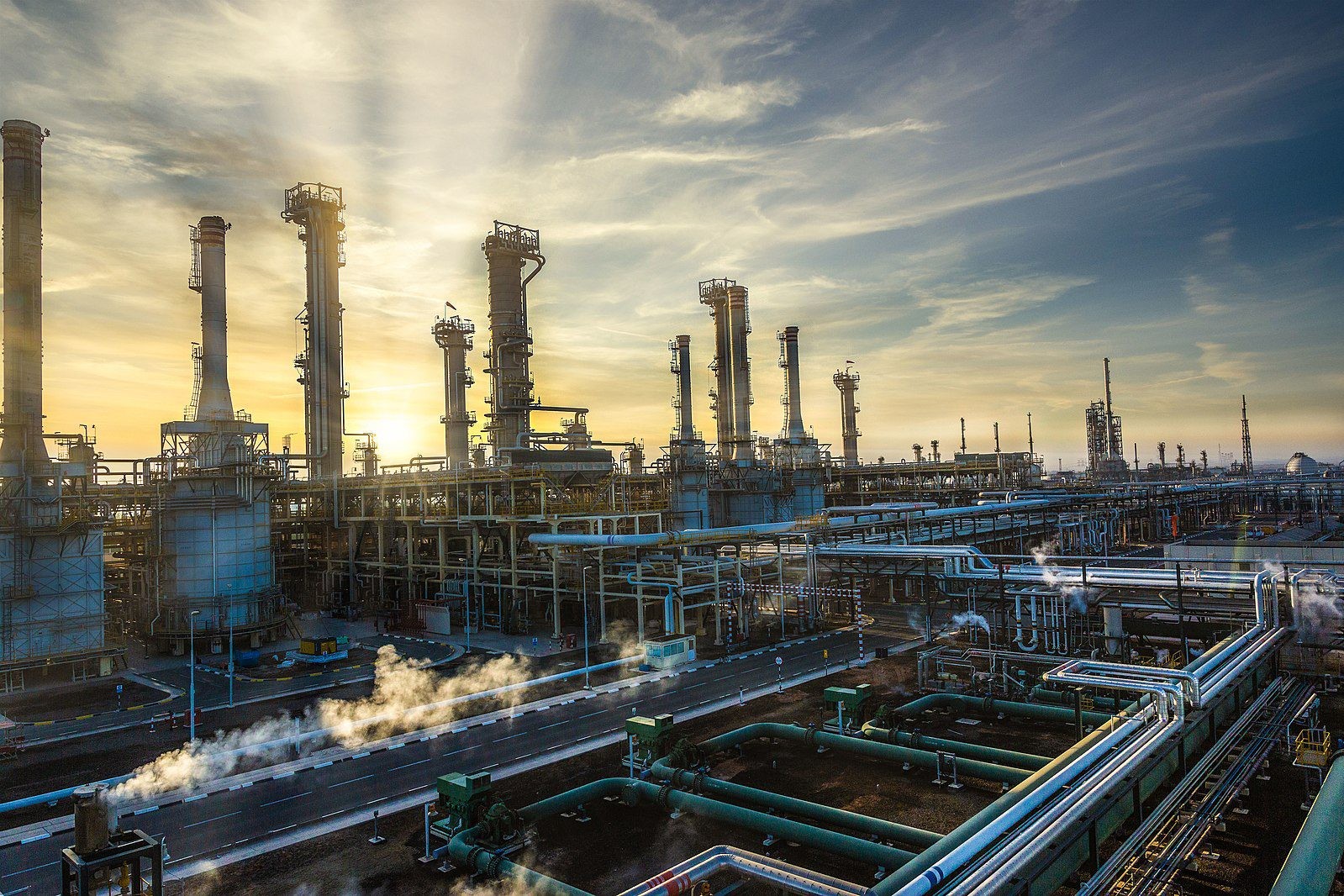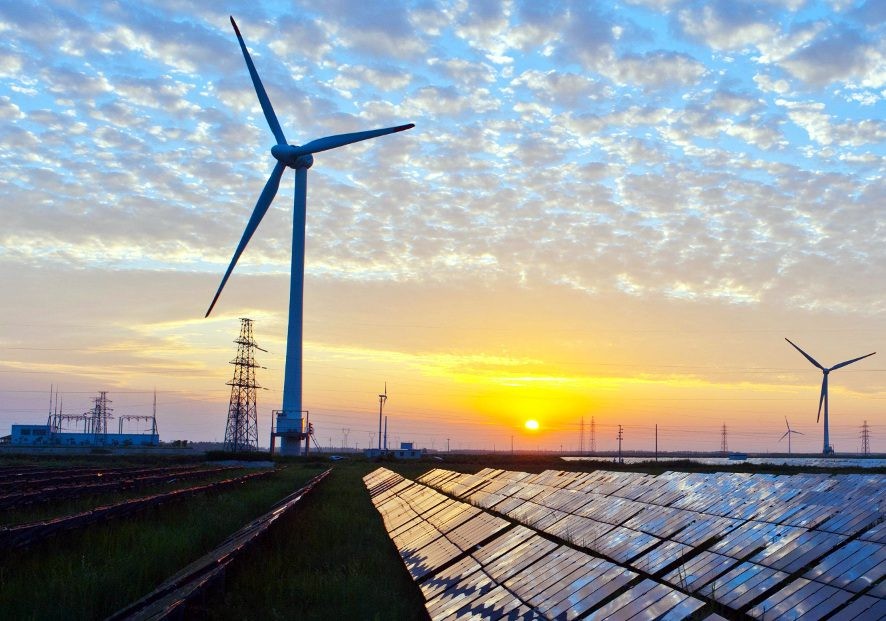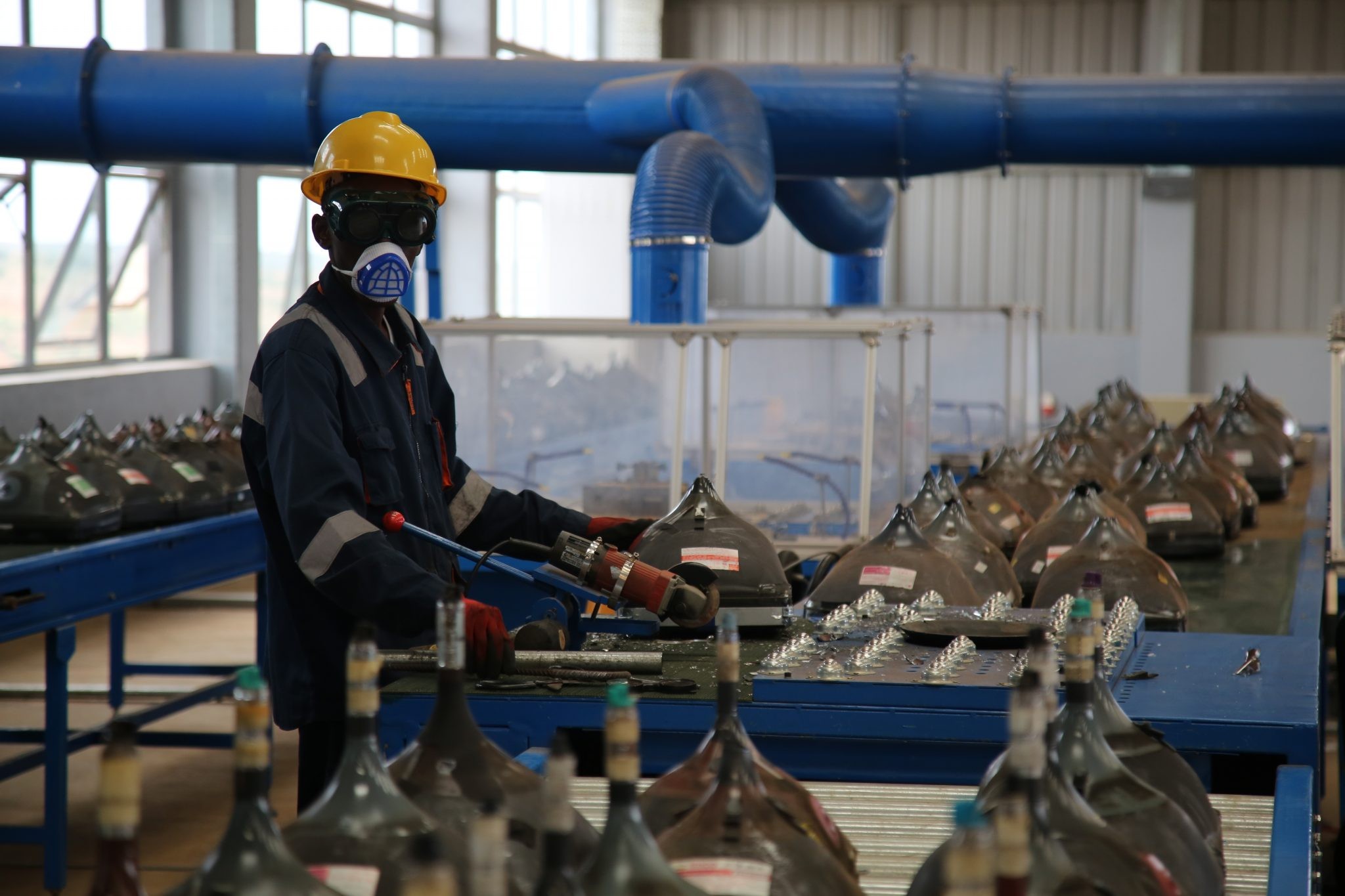Industrial pollution poses significant threats to the environment and human health, but effective mitigation strategies exist. SIXT.VN is committed to promoting sustainable tourism practices that minimize environmental impact. Discover how industries and governments are working to reduce pollution and protect our planet. Learn about sustainable travel options with minimal environmental footprint.
1. Strategic Factory Placement: How Does Location Impact Pollution?
The location of industrial facilities significantly impacts the spread and severity of pollution. Choosing appropriate sites minimizes the harm to sensitive ecosystems.
Building factories in areas with less environmental significance is key. According to research from the Environmental Protection Agency (EPA) in 2023, strategic placement reduces the risk of contaminating critical habitats by up to 40%. Considering climate and topography during site selection also influences how pollutants disperse, potentially lessening their impact. For example, factories built in valleys may experience increased air pollution due to limited air circulation.
 Large Factory
Large Factory
Alt: Industrial factory complex with multiple buildings and smokestacks emitting vapor.
2. Renewable Energy Adoption: Can Renewable Energy Reduce Air Pollution from Factories?
Transitioning to renewable energy sources like solar, wind, and hydro power is a game-changer for lowering air pollution.
Factories powered by renewable energy significantly reduce their carbon footprint. A study by the International Renewable Energy Agency (IRENA) in 2022 found that switching to renewables can decrease a factory’s air pollution by up to 90%. Although the initial investment in renewable energy infrastructure can be substantial, the long-term savings on energy costs and the environmental benefits make it a worthwhile investment. Furthermore, many governments offer incentives and tax breaks for businesses adopting green energy solutions.
 Windmills and Solar Panels
Windmills and Solar Panels
Alt: Wind turbine farm and solar panel array under a bright sky demonstrate sustainable energy solutions.
3. Waste Stream Analysis: How Can Analyzing Factory Waste Reduce Pollution?
Analyzing the composition and volume of waste streams is crucial for identifying opportunities to reduce waste and improve efficiency.
By understanding the types and amounts of waste generated, factories can implement targeted waste reduction strategies. The United Nations Environment Programme (UNEP) reported in 2021 that factories conducting thorough waste analysis can reduce overall waste generation by 20-30%. This analysis allows for process optimization, equipment upgrades, and the implementation of effective recycling systems. For instance, identifying a large amount of packaging waste can lead to a redesign of packaging materials or the adoption of reusable containers.
4. Effective Waste Treatment Methods: What Are the Proper Ways to Treat Factory Waste?
Proper waste treatment is crucial for minimizing the environmental impact of industrial waste.
Treating waste before disposal reduces its volume and toxicity. According to the World Health Organization (WHO) in 2020, effective waste treatment can decrease the harmful effects of industrial discharge by up to 75%. Waste treatment methods include physical treatments (e.g., shredding, compacting), chemical treatments (e.g., neutralization, precipitation), and biological treatments (e.g., composting, anaerobic digestion). Selecting the appropriate treatment method depends on the type of waste and the desired outcome.
 Man Treating Waste in a Recycling Facility
Man Treating Waste in a Recycling Facility
Alt: Waste treatment worker in safety gear sorting materials in a recycling plant environment.
5. Environmental Impact Assessments: Why Are Environmental Impact Assessments Important for Factories?
Regular environmental impact assessments (EIAs) help factories identify and address potential environmental risks.
EIAs evaluate the potential impacts of industrial activities on the surrounding environment and human health. A study by the International Association for Impact Assessment (IAIA) in 2024 showed that factories conducting regular EIAs are 60% more likely to identify and mitigate potential environmental hazards. These assessments help companies implement preventive measures and corrective actions to minimize negative consequences. EIAs should be conducted before starting a new project or making significant changes to existing operations.
 Men Surveying a Waste Facility
Men Surveying a Waste Facility
Alt: Inspectors touring a waste facility to assess environmental impact and compliance.
6. Regulations and Enforcement: How Do Laws and Enforcement Prevent Factory Waste?
Government regulations and strict enforcement are essential for ensuring that factories comply with environmental standards.
Regulations provide a framework for controlling pollution and promoting sustainable practices. The Organization for Economic Co-operation and Development (OECD) reported in 2023 that countries with strong environmental regulations experience a 50% reduction in industrial pollution compared to countries with weak regulations. Regulations can include emission limits, waste disposal requirements, and mandatory adoption of best available technologies. Effective enforcement involves regular inspections, penalties for non-compliance, and incentives for companies that exceed environmental standards.
6.1 Types of Environmental Regulations
Government agencies employ various environmental regulations to manage industrial pollution.
| Regulation Type | Description | Example |
|---|---|---|
| Levies | Polluters pay a fixed amount of money for each unit of pollution they emit. | A tax on carbon emissions for factories exceeding a certain threshold. |
| Cap-and-Trade | A system that sets a limit on total emissions and allows companies to buy and sell emission permits. | The European Union Emissions Trading System (EU ETS) for greenhouse gases. |
| Waste Reduction Techniques | Regulations that mandate specific waste reduction practices and technologies for all polluters. | Requiring factories to implement closed-loop water systems to minimize water discharge. |
| Technology Standards | Regulations that specify the use of certain technologies to control pollution. | Requiring factories to install scrubbers on smokestacks to reduce air pollutants. |
| Performance Standards | Regulations that set specific pollution limits for industries to meet. | Setting maximum allowable levels of pollutants in wastewater discharge. |
6.2 The Role of Government Agencies
Government agencies play a crucial role in enforcing environmental regulations and promoting compliance.
These agencies are responsible for conducting inspections, issuing permits, and imposing penalties for violations. They also provide technical assistance and support to help companies improve their environmental performance. Transparency and public access to environmental data are also important aspects of effective enforcement.
SIXT.VN understands the importance of sustainable tourism and actively promotes eco-friendly travel options. By choosing our services, you support responsible travel practices that minimize environmental impact. Consider our eco-friendly transportation options and accommodations that prioritize sustainability.
Planning a trip to Vietnam? Let SIXT.VN help you create a memorable and sustainable travel experience. Our services include:
- Airport Transfers: Reliable and eco-friendly airport transfers to get you to your destination comfortably.
- Hotel Bookings: We offer a curated selection of hotels that prioritize sustainability and environmental responsibility.
- Tours: Explore Hanoi and its surroundings with our guided tours, designed to minimize environmental impact and support local communities.
- Flight Bookings: We assist you in finding the most efficient and eco-friendly flight options for your journey.
Contact SIXT.VN today to plan your sustainable adventure in Vietnam!
Address: 260 Cau Giay, Hanoi, Vietnam
Hotline/Whatsapp: +84 986 244 358
Website: SIXT.VN
7. Encouraging Sustainable Practices in Tourism
As a traveler, you can contribute to mitigating industrial pollution by supporting sustainable tourism practices. Here’s how:
- Choose Eco-Friendly Accommodations: Opt for hotels and resorts that have implemented sustainability initiatives, such as energy-efficient lighting, water conservation programs, and waste reduction strategies.
- Support Local Businesses: Patronize local restaurants, shops, and tour operators that prioritize environmental responsibility and community engagement.
- Reduce Waste: Minimize your use of single-use plastics by bringing reusable water bottles, shopping bags, and containers.
- Conserve Water and Energy: Be mindful of your water and energy consumption while traveling. Turn off lights and air conditioning when you leave your room, and take shorter showers.
- Choose Sustainable Transportation: Utilize public transportation, bicycles, or electric vehicles whenever possible to reduce your carbon footprint.
By making conscious choices, you can help promote sustainable tourism and minimize the impact of industrial pollution on the environment.
8. The Role of Technology in Pollution Mitigation
Technological advancements play a critical role in mitigating industrial pollution.
From advanced filtration systems to real-time monitoring technologies, innovations are helping factories reduce emissions and improve waste management practices. Investing in research and development of clean technologies is essential for achieving long-term pollution reduction goals. Some key technologies include:
- Advanced Air Filtration: Systems that remove particulate matter and gaseous pollutants from industrial emissions.
- Wastewater Treatment Technologies: Processes that remove contaminants from wastewater before it is discharged into the environment.
- Smart Sensors and Monitoring Systems: Real-time monitoring of emissions and waste streams to detect and address potential problems quickly.
- Carbon Capture and Storage: Technologies that capture carbon dioxide emissions from industrial sources and store them underground.
9. Community Engagement and Education
Engaging local communities and raising awareness about industrial pollution is crucial for fostering a culture of environmental responsibility.
Factories should actively involve communities in environmental monitoring and decision-making processes. Educational programs can help raise awareness about the impacts of pollution and promote sustainable practices. By working together, factories, communities, and governments can create a healthier and more sustainable environment for all.
10. The Benefits of Pollution Mitigation
Mitigating industrial pollution offers numerous benefits, including:
- Improved Public Health: Reducing exposure to pollutants can improve respiratory health, reduce the risk of cancer, and prevent other health problems.
- Environmental Protection: Protecting ecosystems from pollution helps preserve biodiversity, maintain clean air and water, and prevent soil contamination.
- Economic Benefits: Investing in pollution mitigation can lead to cost savings through increased efficiency, reduced waste, and improved resource management.
- Enhanced Corporate Reputation: Companies that demonstrate a commitment to environmental responsibility can enhance their reputation and attract customers and investors.
By taking proactive steps to mitigate industrial pollution, we can create a healthier, more sustainable future for generations to come.
FAQ: Mitigating Industrial Pollution
1. What is industrial pollution?
Industrial pollution refers to the contamination of the environment, including air, water, and soil, by waste and emissions from industrial activities.
2. What are the main sources of industrial pollution?
The main sources include factories, power plants, mining operations, and other industrial facilities that release pollutants into the environment.
3. How does industrial pollution affect human health?
Exposure to industrial pollutants can cause respiratory problems, cancer, neurological disorders, and other health issues.
4. What are some common air pollutants from factories?
Common air pollutants include particulate matter, sulfur dioxide, nitrogen oxides, and volatile organic compounds (VOCs).
5. How can factories reduce water pollution?
Factories can reduce water pollution by treating wastewater before discharge, implementing closed-loop water systems, and preventing spills and leaks.
6. What is the role of government in regulating industrial pollution?
Governments set environmental regulations, conduct inspections, issue permits, and enforce compliance to control industrial pollution.
7. What are some examples of renewable energy sources for factories?
Examples include solar power, wind power, hydropower, and biomass energy.
8. How can technology help mitigate industrial pollution?
Technology can improve air filtration, wastewater treatment, real-time monitoring, and carbon capture to reduce pollution.
9. Why is community engagement important in addressing industrial pollution?
Community engagement helps raise awareness, promote sustainable practices, and ensure that factories are held accountable for their environmental impact.
10. What are the economic benefits of mitigating industrial pollution?
Economic benefits include cost savings through increased efficiency, reduced waste, improved resource management, and enhanced corporate reputation.



